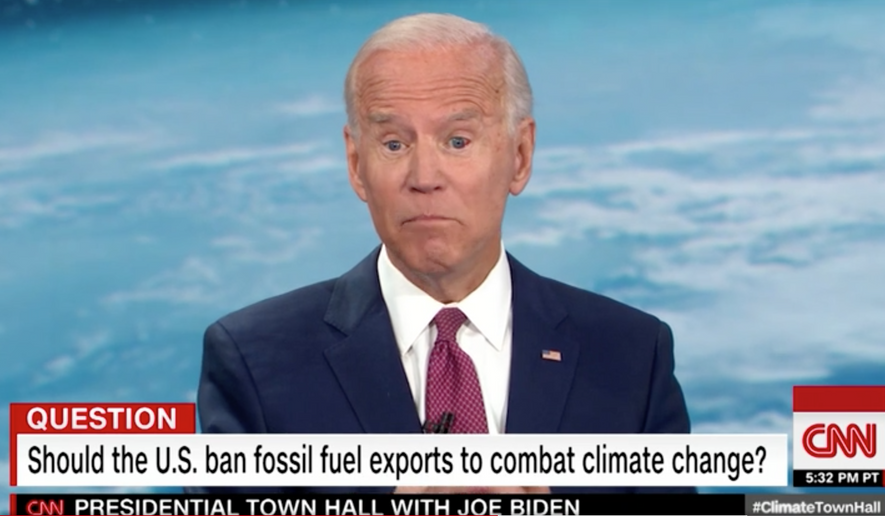
By Richard W. Rahn - - Monday, September 9, 2019
If the government had not spent any tax dollars trying to mitigate climate change during the last 30 years, how much warmer would it have been and how much higher would the sea level be? The correct answer is, no measurable change. To the extent that mankind has an influence on climate change, the United States is a minor player. The United States has been reducing emissions of carbon dioxide, but these reductions are overwhelmed by the increases coming from China, India and some others.
If you really thought that the ocean level was rising rapidly, would you buy a house next to the sea? If you really thought that increased carbon dioxide emissions threatened the very existence of mankind, would you be so selfish as to fly around in a private jet, have houses with many times the carbon footprint of the average person, etc. etc.? Former President Obama just bought his family a very large seafront home. Many of the most vocal Hollywood crowd have multiple large homes, including on the beach, private jets, limos, etc. Their actions are more important than their forked-tongue utterances.
If the United States went to zero carbon emissions next year, it would have no measurable effect on global temperatures or sea level rise. For decades, the global Cassandras have been telling us we have only a limited number of years or it “will be too late.” In 1989, the claim was that doomsday was 11 years away. The year 2000 came and went without the “required actions,” and nothing changed.
This past week, CNN held a seven-hour forum where the various Democratic candidates for president presented their solutions for the “climate crisis.” Each one had a different cost estimate for their solution, as well as a different number of years before the world comes to the end — again, as you recall it did in 2000. Both the cost numbers and the years to the “end” seem to have been untouched by reality.
Joe Biden wants to spend $1.7 trillion over 10 years. Elizabeth Warren wants to spend $3 trillion over the next decade, and Bernie Sanders wants to spend precisely $16.3 trillion over the next 10 years. (By way of comparison, the U.S. GDP is about $20 trillion.) All of the candidates are rather unclear as to what exactly we get for all of the taxpayer money to be spent. If each of the programs is designed to avoid a climate “catastrophe,” it seems most sensible to go with the cheapest — the Biden plan.
Mr. Sanders wants to ban drilling on public lands and fracking anywhere. He also wants to nationalize power companies and expand worker-owned grocery stores and food-processing plants. A similar plan was tried in the old Soviet Union — and, as you may recall, it resulted in Chernobyl, power and food shortages. Ah, but next time they will get it right.
Ms. Warren also wants to ban drilling and fracking on public land, and end the political influence of the fossil fuel companies. She would zero out emissions between 2028-35. The energy deficit would be made up from imprecisely specified green energy.
Unlike most of the others, Mr. Biden’s plan at least has some connection to reality. He is willing to consider small nuclear units, but he insists that we totally phase out fossil fuels by 2050.
Assume that the goal is to move toward zero net emissions of carbon dioxide by some realistic future date. It could be done in a non-economically destructive way, by expanding nuclear to take care of most of the base load. (Note the table — France uses nuclear for about 70 percent of its power. It has done this safely for a half-century, as has the U.S. Navy, which has been using nuclear power in its major ships for many decades.) Natural gas is almost perfect for dealing with power demand surges since it can be quickly turned on and off, unlike wind and solar. Recent studies have shown there is enough suitable land for growing more trees in the United States, Canada, Russia and China to almost totally offset the carbon emissions from burning natural gas (trees inhale CO2 and exhale oxygen — and they look nice and shield much manmade ugliness). In sum, it is very possible to have a more efficient electrical system that over time is carbon neutral.
The U.S. political and media class have managed to turn people who are heroes into villains. For years, the fact that the United States was dependent on less than savory foreign countries was viewed as costly and dangerous for the national well-being. The problem was solved by oil-men, many with advanced degrees in geology and physics who developed fracking, horizontal drilling and other techniques for producing much more oil and gas at much lower prices, and with lower emissions. Thank goodness for realistic private businessmen rather than government/socialist talking heads who would have left the world dependent on whale oil.